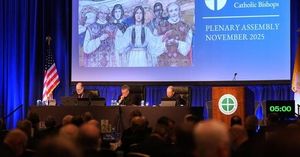On September 24 and 25, 2025, the debate over synchronizing India’s national and state elections—popularly known as “One Nation, One Election”—took center stage in New Delhi. During back-to-back meetings, the Joint Parliamentary Committee (JPC), chaired by BJP MP P.P. Chaudhary, hosted leading economists and former policymakers to dissect the complex web of costs, benefits, and democratic implications surrounding the proposal. The committee, set up on December 23, 2024, was tasked with scrutinizing two pivotal bills: the Constitution (One Hundred and Twenty-Ninth Amendment) Bill, 2024, and the Union Territories Laws (Amendment) Bill, 2024. Both pieces of legislation aim to synchronize the terms of the Lok Sabha and all state and Union Territory Assemblies, fundamentally altering the cadence of Indian democracy.
Economists Arvind Panagariya, current Chairman of the 16th Finance Commission, and Surjit Bhalla, former member of the Prime Minister’s Economic Advisory Council and ex-IMF Executive Director, delivered strong arguments in favor of the simultaneous polls. According to Panagariya, India currently endures 13 elections in every five-year cycle—one every 4.5 months on average. This relentless churn, he argued, is more than just a logistical headache. “Repeated enforcement of the Model Code of Conduct (MCC) disrupts policymaking, procurement, and reform implementation, while frequent elections delay even constitutional bodies like the Finance Commission,” Panagariya explained, as reported by IANS. He highlighted that the MCC, a set of guidelines that kicks in during elections to prevent government misuse of power, often brings key policy decisions to a grinding halt.
Panagariya’s perspective is rooted in both history and economic theory. He recalled the 1957 general elections, noting that the Constitution’s framers had then permitted the early dissolution of some state Assemblies to align their polls with the Lok Sabha. “If the framers had anticipated today’s continuous cycle of polls, they would likely have preferred an arrangement similar to the one envisaged in the 129th Constitutional Amendment Bill,” he argued, according to News Today. In Panagariya’s view, a once-in-five-years election model would extend a “longer and clearer policy horizon for both state and central governments, lowering uncertainty and creating stability that encourages private capital formation.”
The economic consequences of frequent elections, Panagariya stressed, are not minor. He pointed to substantial academic evidence showing that governments tend to ramp up spending in the months leading to elections—an attempt to curry favor with voters. This pre-election spending spree, he noted, drives up fiscal deficits and creates a cycle of short-termism, where long-term reforms are sacrificed on the altar of electoral expediency. “Simultaneous elections would provide policy stability, reduce subsidy burdens, and remove hurdles states often place on Union-level reforms during poll season,” he emphasized.
Surjit Bhalla, echoing Panagariya’s sentiments, zeroed in on the disruptive effect of repeated state elections. “The problem is repeated state elections, not Lok Sabha elections every five years,” Bhalla told the committee, as cited by IANS. He observed that the MCC’s impact is felt more acutely at the state level, since Lok Sabha elections have maintained a regular five-year rhythm for the past two decades. Bhalla went further, stating, “Non-simultaneous elections are expensive and a luxury we can no longer afford.”
Bhalla’s critique extended beyond economics. He argued that frequent elections increase violence and impose both financial and opportunity costs on migrant workers, who often must travel back to their home states to cast their votes, disrupting their livelihoods. “Reduced frequency of elections under ONOE will lead to a reduction in violence,” Bhalla asserted. Both Bhalla and Panagariya agreed that synchronizing elections would ultimately strengthen Indian democracy by reducing instability and fostering an environment more conducive to reforms.
Yet, the committee’s deliberations were not without dissenting voices. Montek Singh Ahluwalia, former Deputy Chairman of the Planning Commission, brought a note of caution to the proceedings. While acknowledging the undeniable costs and disruptions of frequent elections, Ahluwalia insisted that economics alone cannot justify such a sweeping constitutional change. He argued that the broader democratic and institutional implications must be weighed carefully before moving forward.
What exactly would the proposed reforms entail? As outlined in the two bills before the committee, the President would notify the date of the first Lok Sabha meeting after a general election as the “appointed date.” All state and UT Assemblies elected after this date would have their terms curtailed so that they expire simultaneously with the Lok Sabha, making way for joint elections across India. This would require a significant one-time adjustment—potentially shortening or extending the terms of several legislatures—but proponents argue that the long-term gains in efficiency, stability, and cost savings would outweigh the temporary disruption.
Panagariya, in particular, sees historical precedent for such a move. He pointed out that the 1957 Constitution allowed for the early dissolution of Assemblies precisely to facilitate simultaneous elections. In his view, the current continuous election cycle is an unintended consequence of later developments, rather than a deliberate design of the Constitution’s framers. “Today’s continuous election cycle would likely have led the framers to support a system like the 129th Constitutional Amendment Bill,” he argued, according to News Today.
On the practical side, Panagariya and Bhalla both suggested that holding all state Assembly elections together at the mid-term of a Lok Sabha could be a workable compromise, reducing the frequency of elections without undermining government accountability. This approach, they believe, would minimize the policy paralysis caused by the MCC and allow both state and central governments to focus on governance and long-term reforms.
Critics, including Ahluwalia, remain wary. They warn that synchronizing elections could erode the federal character of India’s democracy, concentrating power in the hands of national parties and diminishing the autonomy of state governments. There are also concerns about the logistical and constitutional hurdles involved in curtailing or extending the terms of sitting legislatures, as well as the potential for unforeseen political consequences.
As the committee continues its work, the debate over One Nation, One Election remains as vibrant—and contentious—as ever. Proponents see a path to greater efficiency, stability, and democratic renewal. Skeptics urge caution, reminding the country that the true costs and benefits of such a fundamental change cannot be measured in rupees and paise alone. For now, the future of Indian elections hangs in the balance, awaiting the verdict of Parliament and, ultimately, the people.




